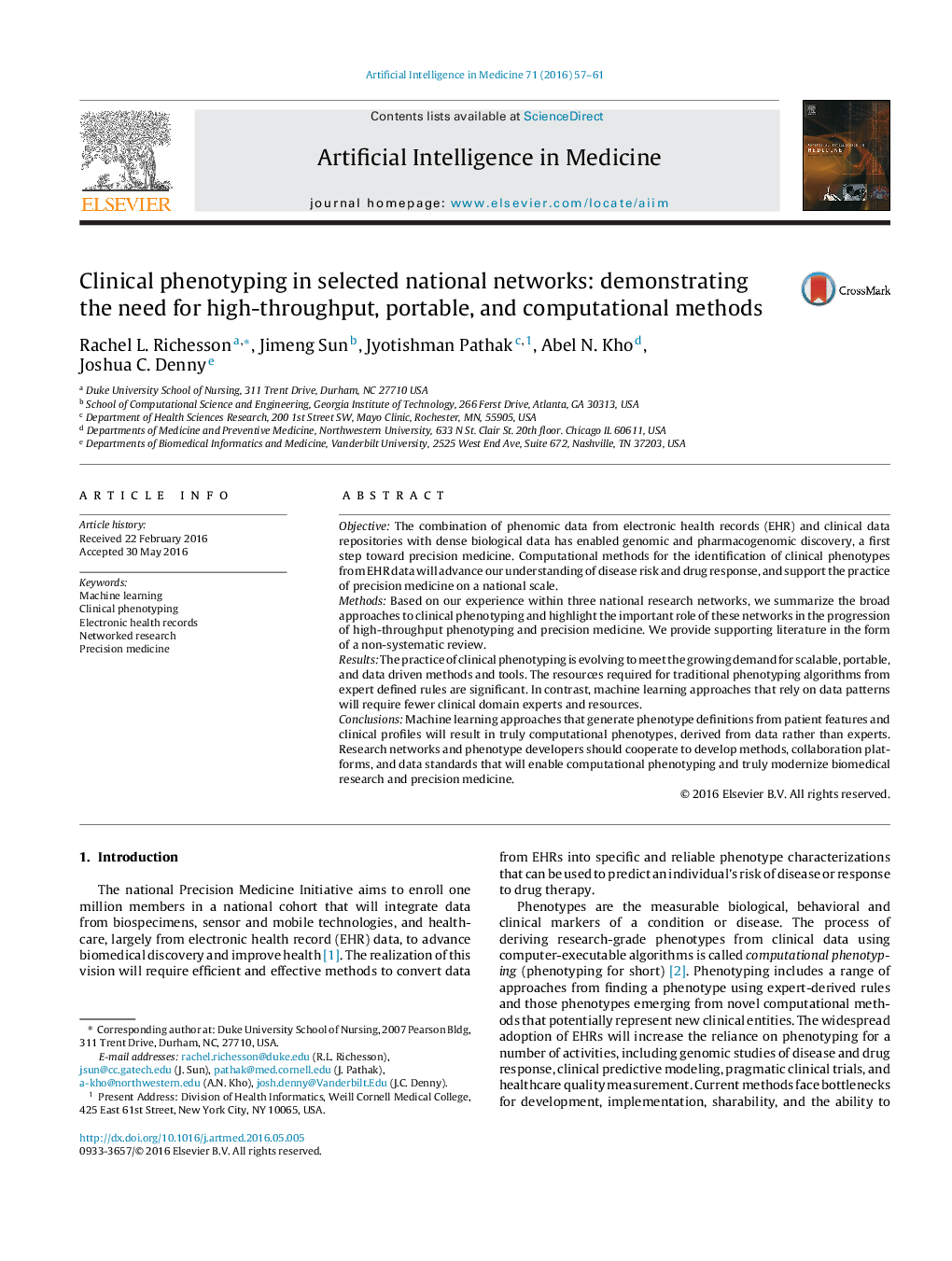| کد مقاله | کد نشریه | سال انتشار | مقاله انگلیسی | نسخه تمام متن |
|---|---|---|---|---|
| 377547 | 658790 | 2016 | 5 صفحه PDF | دانلود رایگان |
• Computational methods for the identification of clinical phenotypes from EHR data are needed to advance our understanding of disease, treatments, and drug response.
• Machine learning approaches that rely on data patterns require fewer clinical domain experts and resources, and meet the growing demand for scalable and portable phenotyping tools.
• Research networks and phenotype developers should support collaboration and data standards that will enable computational phenotyping derived from data rather than experts.
ObjectiveThe combination of phenomic data from electronic health records (EHR) and clinical data repositories with dense biological data has enabled genomic and pharmacogenomic discovery, a first step toward precision medicine. Computational methods for the identification of clinical phenotypes from EHR data will advance our understanding of disease risk and drug response, and support the practice of precision medicine on a national scale.MethodsBased on our experience within three national research networks, we summarize the broad approaches to clinical phenotyping and highlight the important role of these networks in the progression of high-throughput phenotyping and precision medicine. We provide supporting literature in the form of a non-systematic review.ResultsThe practice of clinical phenotyping is evolving to meet the growing demand for scalable, portable, and data driven methods and tools. The resources required for traditional phenotyping algorithms from expert defined rules are significant. In contrast, machine learning approaches that rely on data patterns will require fewer clinical domain experts and resources.ConclusionsMachine learning approaches that generate phenotype definitions from patient features and clinical profiles will result in truly computational phenotypes, derived from data rather than experts. Research networks and phenotype developers should cooperate to develop methods, collaboration platforms, and data standards that will enable computational phenotyping and truly modernize biomedical research and precision medicine.
Journal: Artificial Intelligence in Medicine - Volume 71, July 2016, Pages 57–61
